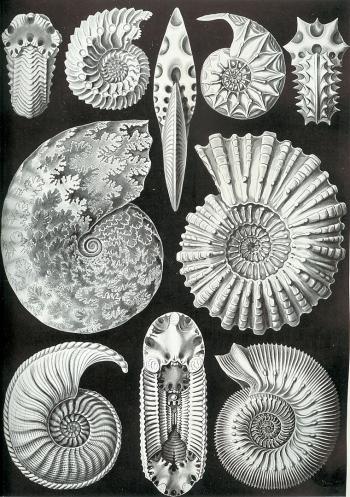
Ammonites may be the most familiar fossil to us — aside from dinosaurs.
What are those spiral rocks that seem to come in every size? Ammonites were molluscs, specifically cephalopods, most closely related to octopus and squid living today.

Fossil records show that ammonites first appeared about 450 million years ago. Ammonites had external shells, which is why their fossils are so abundant. We know ammonites only from their fossils as they died out around 66 million years ago after an asteroid hit the earth causing mass extinctions of three-quarters of earth’s creatures, the most well-known being non-avian dinosaurs.During those 300 million years before their extinction, ammonites were diverse and abundant, with different species occupying different niches in the ocean. Scientists estimate that there were around 10,000 species and likely many more. Paleontologists often use ammonite fossils as “indicators” for the age of rocks and other fossils because known ammonite species lived during different times. Not all had the familiar spiral shape. They evolved into a variety of shapes and sizes. Paleontologists have found ammonites ranging in size from about a quarter inch to seven feet in diameter.
Jetting around, like squid, ammonites were top predators in the shallow waters where they lived. Ammonites fed on many types of marine animals- the smallest ammonite fed on plankton and the largest fed on fish and other cephalopods. They likely were prey to mosasaurs and ichthyosaurs.
Like the nautilus living today, ammonites had chambers to regulate their buoyancy. They were born with tiny shells and, as they grew, they built new chambers. The animal would move its body into a new chamber and seal off the outgrown living quarters with walls known as septa.
Nautiluses lived at the same time as ammonites and seven species live today. Scientists think that they survived the mass extinction 66 million years ago because they lived in deep water and ammonites didn’t survive because they lived in shallow waters.
To learn more, watch this video
Read more here and here.

Parapuzosia seppenradensis is the largest known species of ammonite. Image via Wikimedia Commons















